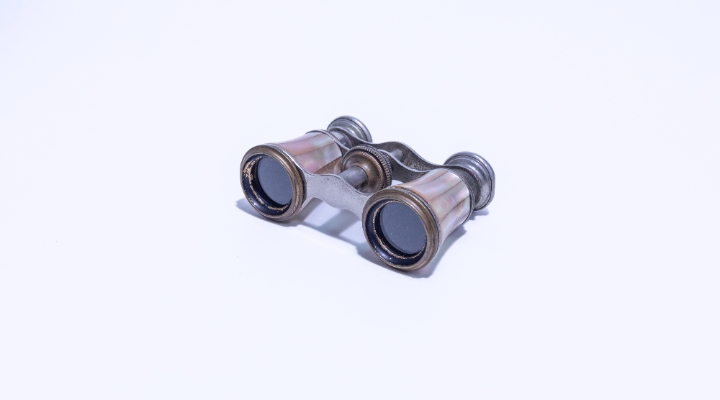
The semiconductor sector has been firing on all cylinders. From automobiles to gaming consoles and digital computing devices, the tiny semiconductor chips are transforming a wide swath of industries, including some emerging technologies in the cryptoverse.
The unprecedented demand has created an acute semiconductor shortage that’s hurting the sector and various industries that depend on a steady chip supply for their revenue growth. As a result, chip suppliers are scrambling to ramp up production. Semiconductor sales are forecast to grow from US$553 billion in 2021 to US$600 in 2022, a 9% jump.
The following leading chipmakers are well positioned to benefit as the easing of supply chain pressures, robust global demand, and improved pricing power boost profitability.
|
Intel Corp |
||
|
Ticker |
||
|
Current yield: |
2.53% |
|
|
Forward P/E: |
15.17 |
|
|
Price |
US$54.94 |
|
|
Fair value: |
US$65 |
|
|
Value |
15% discount |
|
|
Moat |
Wide |
|
|
Moat Trend |
Negative |
|
|
Star rating |
**** |
|
|
Data as of Jan 14, 2022 |
||
World’s largest chipmaker, Intel (INTC) designs and manufactures microprocessors for the global personal computer and data centre markets. Intel's server processor business has hugely benefitted from the global pivot to the cloud. The firm has also been expanding into new markets such as the Internet of Things, artificial intelligence, and automotive.
“The data centers used to facilitate the information stored, analyzed, and accessed by various front-end devices are mostly run with Intel server chips,” says a Morningstar equity report, pointing out that the firm also benefits from the rise in interconnectivity of devices, as “Intel strives to provide the most powerful and energy-efficient silicon solution to any product ‘smart and connected’.”
The chipmaker made a major push into the automotive industry through its US$15.3 billion acquisition of Mobileye in 2017. Morningstar estimates Mobileye's 2021 revenue to be about US$1.4 billion, up from just under US$500 million in 2017.
Intel’s wide moat is underpinned by its superior cost advantages realized in the design and manufacturing of its cutting-edge microprocessors and intangible assets. While rivals TSMC and AMD have grown more powerful, “Intel’s manufacturing advantage over virtually every other chip designer and manufacturer is still intact and durable,” assures Morningstar sector strategist Abhinav Davuluri, who puts the stock’s fair value at US$65.
|
Taiwan Semiconductor Manufacturing Co Ltd ADR |
||
|
Ticker |
||
|
Current yield: |
1.39% |
|
|
Forward P/E: |
30.30 |
|
|
Price |
US$139.19 |
|
|
Fair value: |
US$179 |
|
|
Value |
3% discount |
|
|
Moat |
Wide |
|
|
Moat Trend |
Stable |
|
|
Star rating |
**** |
|
|
Data as of Jan 14, 2022 |
||
Global chip titan, Taiwan Semiconductor (TSMC) holds more than 58% of the process technology market (nodes used alongside chips like CPUs). The company's cutting-edge process technologies have attracted high-profile customers including Apple, AMD and Nvidia.
“The firm has long benefited from semiconductor firms around the globe transitioning from integrated device manufacturers to fabless designers,” says a Morningstar equity report.
While the competition is intensifying, most new entrants are confined to low-end manufacturing due to prohibitive costs and engineering know-how associated with the leading-edge technology. To prolong excess returns, TSMC initially focuses on logic products used on CPUs and mobile chips, then focuses on more cost-conscious applications, the report notes.
“The firm's strategy is successful, illustrated by the fact it's one of the two foundries still possessing leading-edge nodes when dozens of peers lagged,” says Morningstar equity analyst Phelix Lee, who recently raised the stock’s fair value to US$179 per ADR, prompted by increases in five-year revenue CAGR to 16.5% from 14.3%.
Lee sees fears of slowing smartphone and PC shipments as minor grievances, more than offset by “a stronger pipeline of high-performance computing (HPC), demand and increasing certainty from autonomous driving thereafter.”
TSMC’s wide moat, or sustainable competitive advantage, is built on its cost advantage and intangible assets, which are realized from its leading position in process technology, or nodes.
|
NVIDIA Corp |
||
|
Ticker |
||
|
Current yield: |
.06% |
|
|
Forward P/E: |
51.55 |
|
|
Price |
US$265.75 |
|
|
Fair value: |
US$194 |
|
|
Value |
37% premium |
|
|
Moat |
Wide |
|
|
Moat Trend |
Positive |
|
|
Star rating |
** |
|
|
Data as of Jan 14, 2022 |
||
Semiconductor giant Nvidia (NVDA) manufactures chips used in a variety of end markets, including high-end PCs for gaming, data centres, and automotive infotainment systems. More recently, the company has intensified focus on artificial intelligence and autonomous driving, which leverage the high-performance capabilities of the firm's graphics processing units.
While the bulk of Nvidia’s sales was derived from gaming, its increasing data centre presence for GPUs used in deep learning has helped propel the data centre segment. “Nvidia has a first-mover advantage in chip solutions for AI and autonomous-vehicles, though its lead may not last if superior alternatives arise (other forms of acceleration for AI or other self-driving platforms),” says a Morningstar equity report.
The US$6.9 billion purchase of Mellanox Technologies and pending US$40 billion acquisition of ARM have the potential to significantly diversify Nvidia’s end-market exposure. As a result, NVDA could “derive over half of revenue from the data centre segment shortly, which could help mitigate some of the volatility Nvidia has faced in its gaming and cryptocurrency mining-related sales over the past few years,” says Davuluri, who recently lowered the stock’s fair value from US$200 to US$194, prompted by the U.S. Federal Trade Commission’s objection to the ARM’s acquisition.
However, Nvidia's future prospects would not be greatly hampered if the ARM deal falls through, assures Davuluri. “Nvidia's GPU dominance in gaming and data centres remains unparalleled, and it can easily license ARM designs for its future server CPU aspirations without having to acquire ARM,” he adds.






















